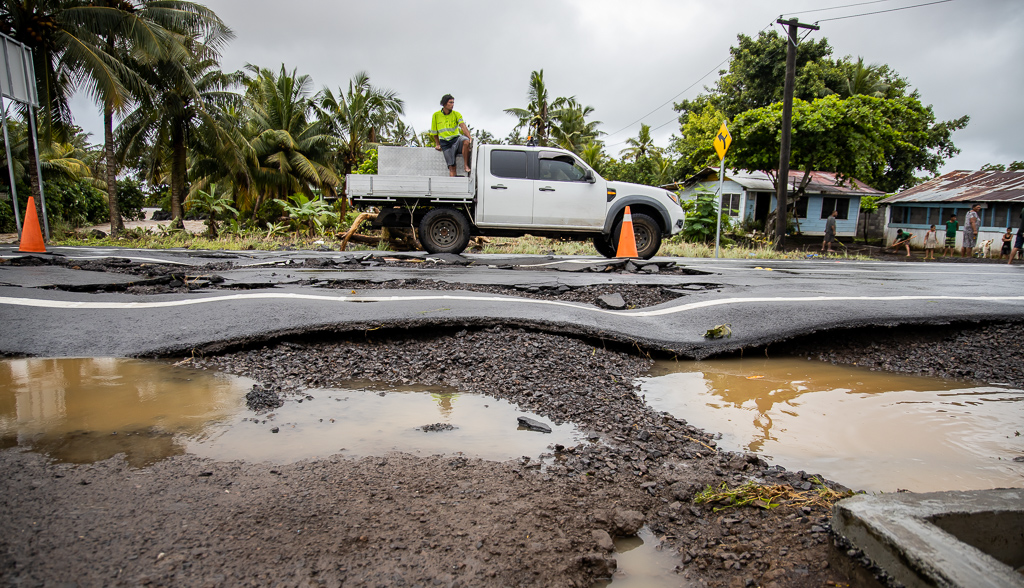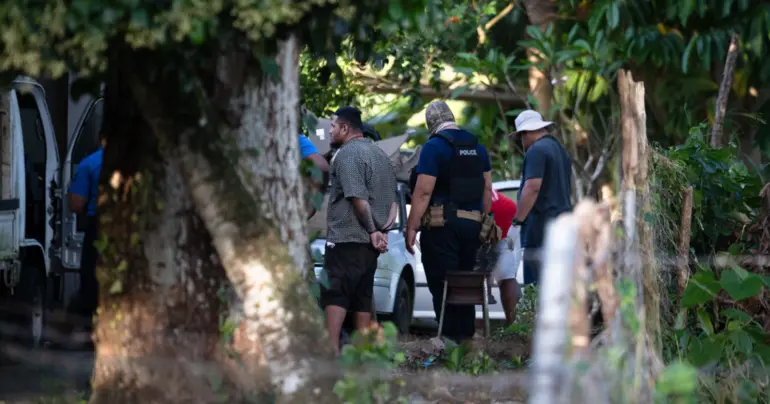Extreme weather events cost $379 billion in 2020
 By Sapeer Mayron
•
30 December 2020, 10:00AM
By Sapeer Mayron
•
30 December 2020, 10:00AM
Extreme weather events during 2020 is estimated to have cost US$150 billion (T$379billion), with the true cost still not counted with most damage not insured.
A new report by Christian Aid tallies the cost of climate change through the ten costliest events that struck during the year, excluding the COVID-19 pandemic.
Report authors Dr. Kat Kramer and Joe Ware developed estimates based on insured losses, and found each severe event cost at least a US$1 billion.
They urge countries to urgently cut greenhouse gas emissions to curb the onset of more severe weather events, and transition to renewable energy.
“Richer countries need to provide more funding to support vulnerable communities living in poorer countries to help them adapt and build resilience to the impacts of climate change,” Dr. Kramer and Mr. Ware write.
“These countries have done the least to cause the climate crisis but suffer its effects disproportionately.
“Richer countries should support developing countries so they can leapfrog the fossil fuelled development path taken by richer countries.”
The reports release comes in the wake of extreme rainfall in Samoa resulting in more than T$70 million worth of damage, with businesses and government agencies likely to be counting the costs well into the New Year.
Christian Aid says intense rainfall is one of the most known consequences of climate change.
“As global temperatures increase, the atmosphere can hold more water vapour. The number of record-breaking rainfall events globally has significantly increased in recent decades.”
In Australia, the bushfires over summer are estimated to cost $5 billion in insured damages, caused 65,000 people to be displaced, and killed 34 people.
The bushfires started in late 2019 and by their end had covered more than 18 million hectares and killed more than a billion wild animals. The full ecological loss is still being counted.
“The smoke from the fires travelled long distances and affected millions of people, covering the skies of cities like Sydney, Melbourne and Canberra,” the report says.
“The cost of smoke-related health issues alone has been estimated at $1.4 billion and insured losses were estimated at $3.6 billion, although other estimates have put the total costs as high as AUS$100 billion (US$70 billion).”
World Weather Attribution, an international research group investigating whether climate change affects extreme weather events, believes climate change increased the risks of the fires by 30 per cent.
“This may be a conservative estimate,” the report continues.
Christian Aid notes that Australia’s own climate targets will not satisfy the Paris Agreement, the international pact on ending climate change. With 60 per cent of the nation’s electricity still powered by coal and the country being the largest exporter of coal and gas, Australia is loath to bring down its coal production.
Elsewhere in the Asia Pacific region, severe weather events were dominated by floods. Of the top 10 events reported on, China, India, Japan, and Pakistan were awash with water and over 8 million people displaced.
The floods also claimed 2,837 lives.
Collectively the four countries lost US$46.5 billion.
“This is the second consecutive year where India experienced abnormally high rainfalls during the monsoon season.
“And over the last 65 years, the country has seen a three-fold increase in extreme rain events. Climate change is likely one of the causes, with models showing that flood frequency in India would be twice as high in a high carbon emissions scenario, as compared to a low carbon emissions scenario.”
In India, Sri Lanka and Bangladesh, Cyclone Amphan cost US$13 billion and took 128 lives, with a further 4.9 million people displaced.
Ampham was also one of the strongest storms on record in the Bay of Bengal. Wind speeds reached 270 kilometres per hour.
“The Bay of Bengal is one of the world's most vulnerable regions to climate change. In addition to being densely populated, the conditions in the bay are ideal for tropical cyclone formation. Also, the lowlands in the Ganges delta are prone to flooding and saltwater intrusion,” the report says.
In the Philippines, people experienced the two most damaging tropical cyclones of the year: Typhoon Goni and Typhoon Vamco, between October and November.
The two have cost the country at least $1.5 billion and killed 97 people, with Goni-struck areas also hit by Vamco.
“Both typhoons underwent ‘rapid intensification’, the processs by which tropical cyclones increase their strength in short periods of time and that is becoming more common due to global warming,” the report explains.
“And as the planet warms and sea surface temperatures increase, experts expect that typhoons, in the Philippines and elsewhere, will become stronger.”
Tags
 By Sapeer Mayron
•
30 December 2020, 10:00AM
By Sapeer Mayron
•
30 December 2020, 10:00AM











